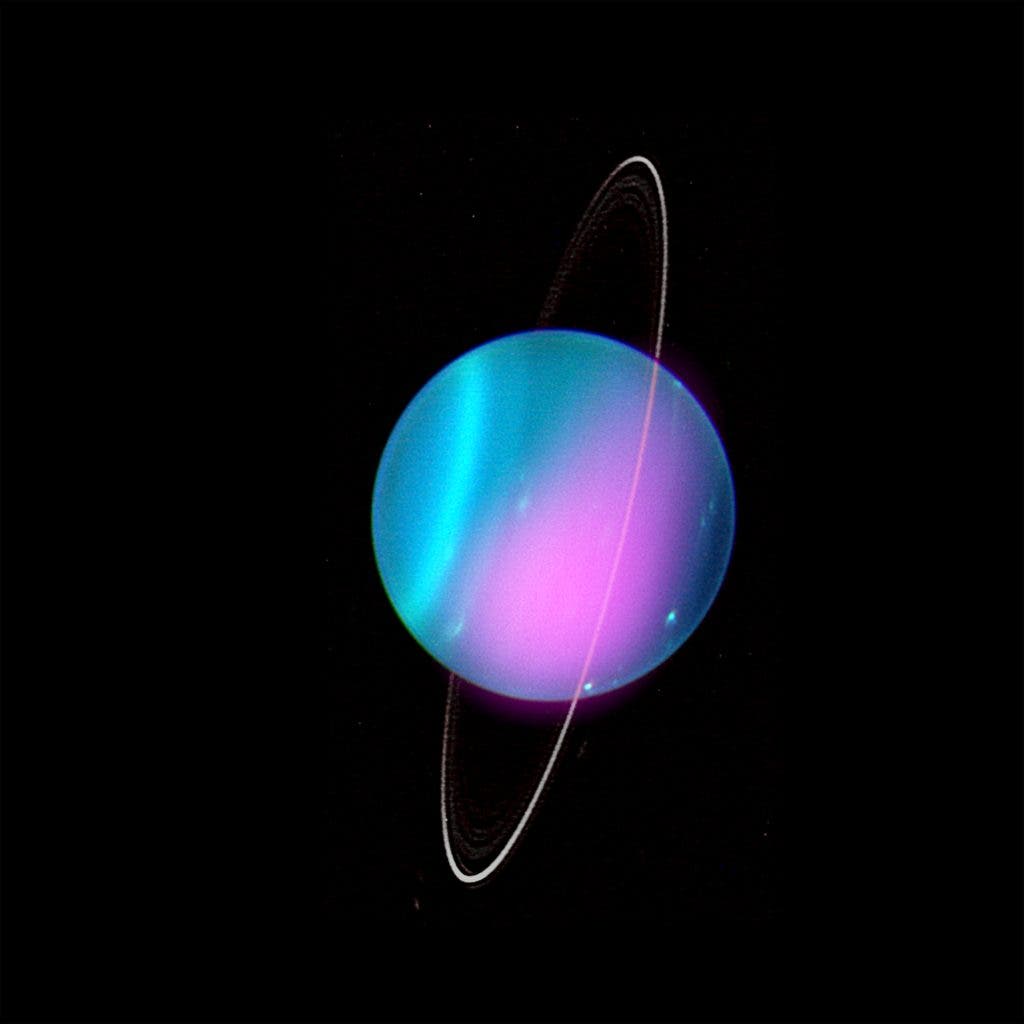Astronomers have detected a new, potentially deadly emanation coming from Uranus: X-rays. While most of these are likely produced by the sun and then reflected by the blue planet, the team is excited about the possibility of a local source of X-rays adding to these emissions.

The seventh planet from the sun has the distinction of being our only neighbor that rotates on its side. But that’s not the only secret this blue, frigid dot in space seems to hide, according to new research. The planet also seems to be radioactive — after a fashion. This discovery currently leaves us with more questions than answers, but it could help us better understand Uranus in the long run.
Deep space rays
Since it’s so far away, we’ve had precious few opportunities to interact with the planet. In fact, the only human spacecraft to ever come near Uranus was Voyager 2, and that happened in 1986. So most of our data regarding the frozen giant comes from telescopes, such as NASA’s Chandra X-ray Observatory and the Hubble Space Telescope.
A new study based on snapshots of Uranus taken by Chandra in 2002 and 2017. These revealed the existence of X-rays in the data from 2002, and a possible burst of the same type of radiation in the second data set. The 2017 dataset was recorded when the planet was approximately at the same orientation relative to Earth as it was in 2002.
The team explains that the source of these X-rays, or at least the chief part of them, is likely the Sun. This wouldn’t be unprecedented: both Jupiter and Saturn are known to behave the same way, scattering light from the Sun (including X-rays) back into the void. Earth’s atmosphere, actually, behaves in a similar way.
But, while the team was expecting to observe X-rays coming off of Uranus due to these precedents, what really surprised them is the possibility that another source of radiation could be present. While still unconfirmed, such a source would have important implications for our understanding of the planet.
One possible source would be the rings of Uranus; we know from our observations of Saturn that planetary ring systems can emit X-rays, produced by collisions between them and charged particles around the planets. Uranus’ auroras are another contender, as we have registered emissions coming from them on other wavelengths. These auroras are also produced by interactions with charged particles, much like the northern lights on Earth. Auroras are also known to emit X-rays both on Earth and other planets.
The piece that’s missing in the aurora picture, however, is that researchers don’t understand what causes them on Uranus.
Its unique magnetic field and rapid rotation could create unusually complex auroras, the team explains, which further muddies our ability to interpret the current findings; there are too many unknown variables in this equation. Hopefully, however, the current findings will help point us towards the answers we need.
The paper “A Low Signal Detection of X‐Rays From Uranus” has been published in the Journal of Geophysical Research: Space Physics.









